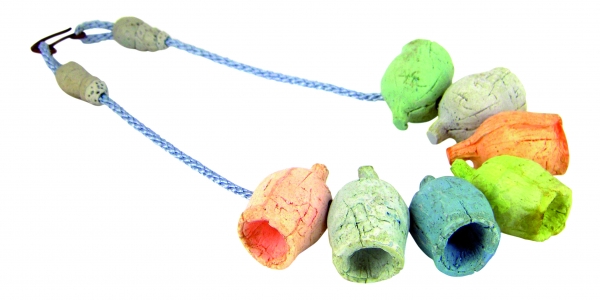The idea for ‘Kitsch Australiana’ came to form after trips to the markets, where Boldiston would go hunting for pieces for his store. Continually coming across second-hand gems that reminded him of his childhood family holidays, he toyed with the idea of souvenirs being displayed in the modern home. “What better way to have my question answered than by challenging the artists involved with my store to come up with their own, modern take on Australiana,” Boldiston explained. “Many of the exhibition pieces have been repurposed or recycled from existing souvenirs. As Australians, we have the ability to poke fun at ourselves. Like any culture, we have aspects to be proud of, aspects we should be ashamed.”
Boldiston explained, however, that ‘Kitsch Australiana’ is not about ‘taking the piss’; it is pieced together to show the multiple aspects of what makes Australia great. “Kitsch Australiana is an extension of this ability [to make fun]. We know [the pieces] may be tacky in their Australian-ness, but there is something appealing or comforting that they are uniquely ours to love and enjoy, despite their appearance.”
Boldiston enjoyed curating the exhibition and seeing how the subject allowed his team of artists and jewellers to explore and express their nationality, creating works that “were a bit more fun, rather than creating serious pieces for the store.”
Used to make ornamental boomerangs, ashtrays and cheeseboards, Tim Murray turned “the unloved or under-appreciated” mulga wood into two tall salt and pepper mills. Mulga wood was in prominent use in the ‘50s, however, Murray has created a contemporary homage to the household items.
In a great display of brute strength, a footballer goes for the ‘speckie’, launching himself off of an opponent’s back. However, in Beth Croce’s hand-inked image The Mark, she shows the delicate nature of the human skeleton, displaying bodies in motion from in the inside rather than out, as well as demonstrating the fight against physics – anything to reach that Sherrin.
Rescued from various kitchen renovations is Liz Jones’ I Still Call Australia Home; built state-by-state from patterned linoleum is a wearable map of Australia. Nothing signifies an Australian summer like peeling sweaty feet from a lino floor with every step, and so Jones’ brooch (which does include Tasmania) was created as a memento to the Australian home.
Giving gumnuts a “stylish makeover” is Lauren Pitt and Bush Fairy Tale; a pastel-coloured resin gumnut necklace. Growing up with May Gibbs’ stories of Gumnut babies and secret bush communities, Pitt’s gumnut necklace is a display of her appreciation of the bush and Australia’s native flora, a respect she learnt from Gibbs’ tales.
Jo Grant ransacked the op shops of Victoria’s Western Districts to collect as many souvenir tea towels she could find. With these, she pulled them apart and put them back together again to create a series of contemporary Tea Towel Landscapes. Rather than purchasing new souvenir towels, it was important to Grant to find ones that had a history to make an emphasis on Australia’s rich heritage and how Australia has evolved over time.
The exhibition also showcases work by Justine Austen, Natasha DeSilva, Dianne Erdmanis, a.l.i.Alexander and Andrew V Weatherill.
Though Boldiston feels uncomfortable with serious celebrations of Australianism (“it seems to border on fanaticism to the detriment of others, not ‘Australian’ enough”) it is the kitsch side to Australia that “allows a bit of a laugh about what it means to be Australian. It also allows me to put something in the pool room!
“I hope people walk away with a new appreciation of what Australiana can be,” Boldiston says. “We should be looking forward, respecting the past and surrounding ourselves with our own locally made pieces of Kitsch Australiana.”
BY ALEXANDRA DUGUID







